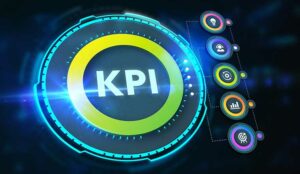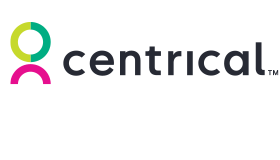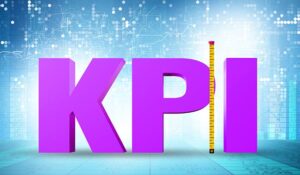KPIs provide data-driven, objective measures of success, so knowing the essential contact centre KPIs – and choosing the right ones for your organization – will enable you to achieve success.
What Are Contact Centre KPIs?
Contact centre KPIs are specific metrics used to assess performance and effectiveness in achieving set objectives.
KPIs for call centres can be used to evaluate multiple areas of contact centre performance, from external metrics such as customer satisfaction or Net Promoter Score to internal metrics such as First Call Resolution (FCR) or abandonment rates.
The secret to effective KPIs for call centres is organizational alignment: ensuring that KPIs support the strategic overall business goals of the organization.
It’s also important to ensure that individuals and team performance can impact their KPIs. For example, agents should not be held entirely responsible for customers hanging up before even reaching an agent (high abandonment rates).
Benefits of KPIs for Call Centres
While there are numerous benefits of KPIs for call centres, the following stand out for the value they provide to the organization:
1. Directly Drive Success
Without a clear definition of success, not only will this success remain elusive, but there will be no clear way to plan for its achievement.
2. Optimize Performance
If there is no indicator that performance is off course, there is no way for an organization to make the necessary corrections to get back on track. KPIs are a constant indicator of progress, as well as identifying areas for improvement.
3. Focus on Key Inputs
By using KPIs, companies can highlight the factors that directly drive success. One common indicator is customer satisfaction – increasing this is likely to lead to higher levels of achievement.
4. Organizational Alignment
Having transparent, widely acknowledged KPIs in place transforms company, team, and individual goals into concrete reality, allowing all stakeholders to pull together in the same direction.
How to Pick the Right KPIs for Call Centres
Picking the right KPIs for call centres is a function of your specific business goals. The first challenge is knowing all the available KPIs and the next challenge is selecting those that support your goals.
The nature of the contact centre also dictates the definition of success for a specific KPI. For example, inbound contact centres that resolve customers’ problems might want the shortest Average Handling Time (AHT) possible, while an outbound contact centre selling a product or service might want to see longer calls on average.
14 Essential Contact Centre KPIs
What follows are fourteen of the most common KPIs for call centres:
1. Average Handling Time (AHT)
AHT measures the average amount of time it takes for a contact centre agent to handle a customer interaction – including the time spent on the call or chat, and any related post-call work.
2. First Call Resolution (FCR)
FCR shows the percentage of customer inquiries or issues that are resolved during the first contact with a contact centre.
3. Customer Satisfaction (CSAT)
This metric gauges the level of customer satisfaction after an interaction with the contact centre and is usually obtained through post-interaction surveys or feedback.
4. Service Level
Service level represents the percentage of calls or interactions answered within a specified timeframe; for example, a common service level goal might be to answer 80% of calls within 20 seconds.
5. Abandonment Rate
This rate indicates the percentage of customers who disconnect or hang up before reaching a contact centre agent.
6. Occupancy Rate
Occupancy rate measures the amount of time, expressed as a percentage, that agents spend handling customer interactions compared to the time they are available to take calls.
7. Agent Utilization
This measures the percentage of time an agent spends on active interactions (calls, chats, emails) versus idle or unproductive time.
8. Customer Effort Score (CES)
CES indicates how much effort a customer must expend to resolve their issue or receive assistance.
9. Net Promoter Score (NPS)
NPS measures the likelihood of customers recommending the company to others.
10. Customer Retention Rate
Customer retention rate measures the percentage of customers who continue to do business with the company over a specific period.
11. Average Speed of Answer (ASA)
ASA measures the average time it takes for a customer’s call to be answered by a contact centre agent.
12. Service Level Agreement (SLA) Compliance
A Service Level Agreement, or SLA, governs the agreed-upon service levels between the provider and the customer and usually refers to specifics such as quality, availability, and response times.
SLA compliance tracks the contact centre’s ability to meet predefined service level targets agreed upon with the organization or clients.
13. Contact Quality or Quality Assurance (QA) Score
These scores assess the performance of agents in handling customer interactions and are often measured by monitoring recorded calls or evaluating interactions through other channels.
14. Employee Satisfaction (ESAT)
ESAT measures the satisfaction level of contact centre agents.
Measuring and Tracking Contact Centre KPIs
There are multiple ways to measure and track KPIs for call centres, including:
- Contact centre reporting software
- Post-interaction surveys
- Quality assurance (QA) evaluations
- Historical data analysis
- Agent scorecards
By providing visible dashboards – ideally, through a modern platform that’s accessible to agents via their mobile device – performance can be effectively tracked, and the necessary improvements made in time to achieve the set goals.
Using Contact Centre KPIs to Drive Performance
Using contact KPIs for call centres to drive performance is a strategic approach that empowers contact centre agents to improve efficiency, enhance the customer experience, and achieve organizational goals.
KPIs help contact centre managers identify areas of improvement and implement targeted strategies to optimize agent performance. For example, if AHT is consistently high, managers may identify training needs or streamline processes to reduce handling times, improve customer service, and raise agent productivity.
KPIs for call centres also act as a benchmark for performance evaluation – motivating agents to meet and exceed their targets. Regular performance reviews based on KPIs enable transparent feedback, fostering a culture of continuous improvement.
Contact Centre KPI Metrics for Measuring Customer Experience
The customer experience is mission-critical for sustained growth, and choosing the right KPIs for customer satisfaction is essential.
While we’ve looked at call centre KPI metrics for success in general, the following metrics are particularly important for evaluating customer experience:
- Customer satisfaction (CSAT)
- Net Promoter Score (NPS)
- First Call Resolution (FCR)
- Average Handling Time (AHT)
- Customer Effort Score (CES)
Challenges and Best Practices in Contact Centre KPI Management
Challenges in contact centre KPI management include data accuracy and integration, finding the right KPIs to drive the behaviors that lead to the achievement of business goals, and balancing the quality and quantity of different metrics.
Best practices should include:
- Aligning KPIs with organizational goals
- Regularly reviewing and adjusting KPIs
- Providing agent training and support
- Real-time coaching and personalized learning at scale
- Leveraging advanced gamification to drive results and increase retention and engagement
- Enabling agents to manage their own performance
- Providing your teams with the right tools
FAQs
What Are Four (4) Commonly Used KPIs in a Call Centre?
Four commonly used KPIs are Average Handling Time (AHT), First Call Resolution (FCR), Customer Satisfaction (CSAT), and Service Level (SL).
How Do You Create a KPI for a Call Centre?
First, assess your business goals. Then determine which key call centre KPI metrics will be instrumental in achieving those goals; these become your KPIs.
What Is the Best Contact Centre Management Solution for Call Centre Metrics?
The best solution is a modern platform that includes everything from advanced gamification and real-time AI-powered coaching to personalized microlearning and performance management.
Summary: Getting Your KPIs for Call Centres Working for You
We just took a deep dive into some of the basics around call centre key performance indicators, their benefits, and more. A few key takeaways:
Contact centre KPIs are part of a strategic approach to improve efficiency, enhance the customer experience, and drive performance and business success.
Contact centre KPIs help identify areas of improvement and implement targeted strategies for optimizing performance. They can also serve as a benchmark for performance evaluations.
Important KPIs for evaluating the call centre customer experience include customer satisfaction (CSAT), Net Promoter Score (NPS), and First Call Resolution (FCR).
Quality assurance (QA) evaluations, agent scorecards, and post-interaction surveys are some of the most common ways to measure and track contact centre KPIs.
Best practices such as aligning KPIs with organizational goals, regularly evaluating and refining the KPIs, and providing the right tools and support for agents can remedy any potential challenges.
Using a gamification-based Performance eXperience platform is the most effective way to achieve your contact centre KPIs, and ultimately achieve business success.
This blog post has been re-published by kind permission of Centrical – View the Original Article
For more information about Centrical - visit the Centrical Website
Call Centre Helper is not responsible for the content of these guest blog posts. The opinions expressed in this article are those of the author, and do not necessarily reflect those of Call Centre Helper.
Author: Centrical
Published On: 4th Sep 2023 - Last modified: 9th Dec 2024
Read more about - Guest Blogs, Centrical






 Centrical provides a real-time performance management, microlearning, gamification, coaching, and voice of the employee platform for frontline teams. The solution inspires and personally guides employee success and growth by making every moment actionable.
Centrical provides a real-time performance management, microlearning, gamification, coaching, and voice of the employee platform for frontline teams. The solution inspires and personally guides employee success and growth by making every moment actionable. 








